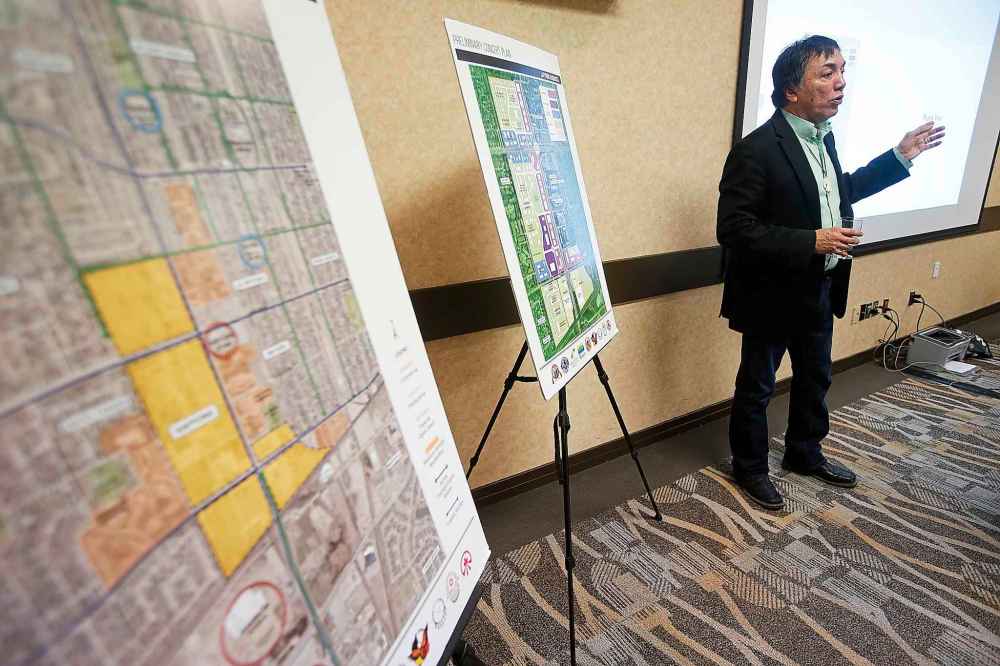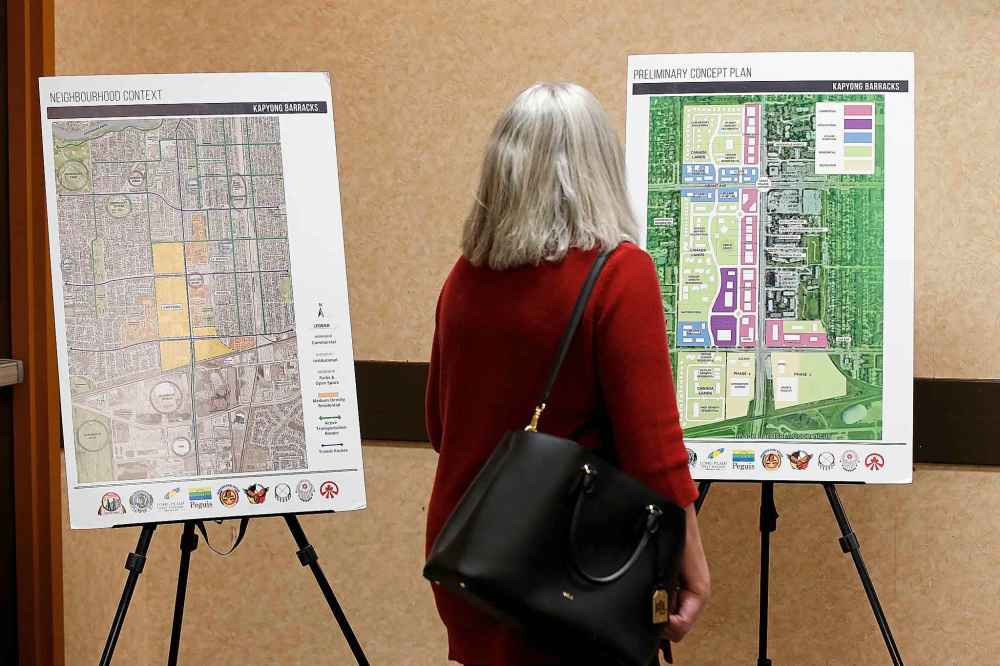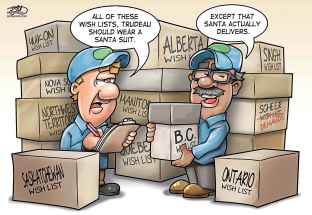Homes, condos, arena touted for Kapyong Barracks land
Read this article for free:
or
Already have an account? Log in here »
To continue reading, please subscribe:
Monthly Digital Subscription
$0 for the first 4 weeks*
- Enjoy unlimited reading on winnipegfreepress.com
- Read the E-Edition, our digital replica newspaper
- Access News Break, our award-winning app
- Play interactive puzzles
*No charge for 4 weeks then price increases to the regular rate of $19.00 plus GST every four weeks. Offer available to new and qualified returning subscribers only. Cancel any time.
Monthly Digital Subscription
$4.75/week*
- Enjoy unlimited reading on winnipegfreepress.com
- Read the E-Edition, our digital replica newspaper
- Access News Break, our award-winning app
- Play interactive puzzles
*Billed as $19 plus GST every four weeks. Cancel any time.
To continue reading, please subscribe:
Add Free Press access to your Brandon Sun subscription for only an additional
$1 for the first 4 weeks*
*Your next subscription payment will increase by $1.00 and you will be charged $16.99 plus GST for four weeks. After four weeks, your payment will increase to $23.99 plus GST every four weeks.
Read unlimited articles for free today:
or
Already have an account? Log in here »
Hey there, time traveller!
This article was published 18/11/2019 (2212 days ago), so information in it may no longer be current.
Initial plans for the development of the Treaty 1-owned portion of Kapyong Barracks include homes, condos and student and elder housing, as well as an Indigenous War Museum and arena with an NHL-sized rink.
The design and planning process officially began this week, with public consultation and the release of specific concepts expected to take place over the next few months.
Peguis wants in on Métis’ Kapyong talks
OTTAWA — One of the First Nations set to inherit the former Kapyong barracks lands wants to be at the table for Ottawa’s negotiations with the Métis.
OTTAWA — One of the First Nations set to inherit the former Kapyong barracks lands wants to be at the table for Ottawa’s negotiations with the Métis.
In September, the Manitoba Metis Federation asked a Federal Court judge to quash a deal Ottawa signed this spring to transfer the Winnipeg land to Treaty 1 First Nations, on the basis the federal government did not consider Métis land rights.
Earlier this month, a judge put the matter on hold for six months, at the request of both parties, in order for them to discuss those talks.
On Nov. 6, Peguis First Nation asked to intervene in the case, which a judge rejected, as it was on hold.
On Nov. 12, lawyers for Peguis clarified they want to be part of those talks, as “these discussions may well impact the rights of” Peguis, and lead to their own lawsuit if the First Nations aren’t adequately consulted.
The judge has given Ottawa and the MMF until Thursday to weigh in.
— Dylan Robertson
In August, after 17 years of negotiations and legal battles, the seven Treaty 1 First Nations signed a settlement to purchase the land from the federal government, with intentions to convert it to an urban reserve.
Long Plain Chief Dennis Meeches, president of the Treaty One Development Corp., outlined the initial concepts to a group of non-profit housing professionals Monday afternoon.
Meeches, who called Kapyong “probably the most hotly-contested property in Western Canada,” told guests at the Manitoba Non-Profit Housing Association’s annual conference the parcel of land represented vast economic potential — an estimated $2 billion in investment, along with at least 2,000 jobs.

The room was mostly interested in the potential makeup for the development’s housing component. Housing, Meeches said, “makes or breaks” First Nations, and the development’s early-stage housing concepts would emphasize a mix of low- to medium-density residential space, comprising standalone homes, condos, as well as student and elder housing.
He said he wasn’t opposed to social housing, but Treaty 1 has not made a decision to build any on the urban reserve.
Other initial plans for the land include developing an Indigenous hospice, as well as the war museum. As well, the arena would feature a basketball court and an NHL-sized rink. Meeches hinted some big-box retail stores had expressed interest in developing on site, though he wouldn’t say which.

David Thomas, the corporation’s manager of planning and design, as well as an architect, said the residential and commercial space would echo that of the surrounding area.
The preliminary concepts were modelled off the existing properties that border the Kapyong parcel, of which Treaty 1 owns 110 acres. The remainder is owned by Canada Lands, the Crown corporation specializing in real estate development.
“We’re not going to sell our land ever again.”– David Thomas, manager of planning and design for Treaty One Development Corp.
With conceptual development of the master plan in its early stages, Meeches didn’t provide much detail on how many people were anticipated to live in the First Nations-owned portion. He did suggest an intention for the reserve to be “open,” meaning anyone will be able to lease from the corporation on a long-term basis.
“We’re not going to sell our land ever again,” Thomas told the Free Press, with a smile.

Meeches said the concept of using the land as an urban reserve is aligned with the desire young people living in rural areas have to move to cities for opportunities in education, employment, and housing.
He pointed to Long Plain’s Keeshkeemaquah reserve, outside Portage la Prairie, as an example of the benefits. “For all intents and purposes, it’s an extension of the city,” he said, addressing a segment of the public concerned over what an urban reserve means.
Winnipeg already has two such areas: Peguis First Nation officially established a 3.71-acre reserve at 1075 Portage Ave. in July, and Long Plain established one on a plot in St. James six years ago.

Meeches said the corporation will seek out Indigenous businesses to establish storefronts, and to rent out spaces to a variety of Indigenous organizations on the land, in addition to other tenants.
Thomas said more specific planning information will be released in the new year.
ben.waldman@freepress.mb.ca

Ben Waldman covers a little bit of everything for the Free Press.
Our newsroom depends on a growing audience of readers to power our journalism. If you are not a paid reader, please consider becoming a subscriber.
Our newsroom depends on its audience of readers to power our journalism. Thank you for your support.












